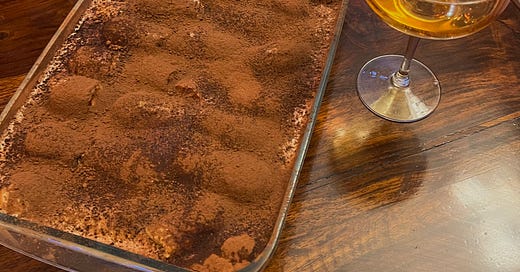I am not a dessert person. I find most of them too sweet, and by the time dessert rolls around, I’m usually too full. Sometimes I’ll get a sorbet or an affogato, maybe espresso or a digestif if the night is still young. But I’ll always get a tiramisu if it's on the menu. This means I’ve sampled quite a lot of tiramisu in my days. Some have been really good—soft, nicely caffeinated—others, not so much—chewy and incredibly cold. The latter usually comes in little cups at restaurants, so beware.
For me, tiramisu, should be served on a plate as an individual square-ish piece, light yet dense at the same time, with distinct flavours of mascarpone, sugar, cocoa, and espresso. And in my ideal version, it should have a light amaretto or cognac aroma. Which is why this recipe is titled the way it is, so that I don’t offend anyone. Like one of my Italian friends, who swears that the original recipe doesn’t contain alcohol. He’s from Rome and has a tendency to be right about things, which annoys me, slightly. But could it be that the recipe I’ve got is just his Roman way? It might be. Once, another Italian from Naples served me a tiramisu that—guess what—contained liquor of some sort. Don’t you just love Italians for this?
However, while preparing this post, I did a little research into the history of tiramisu and discovered that, indeed, the original recipe contains only six basic ingredients: eggs, mascarpone, sugar, ladyfingers, cocoa, and coffee. Annoying. Does that mean I would follow this rule? Not really.
You see, like my Italian counterparts, I have a recipe that I believe is the best version of tiramisu. It follows an 'original' tiramisu recipe with an amaretto twist, just like my mum’s version. She’s been making it since I was little, especially for special occasions - one of which was always the New Year’s Eve. The earliest memory I have of tiramisu is being a little girl and tasting it from my mum’s plate. Maybe it was her Polish twist on the Italian classic, but she’d always add alcohol to it—usually amaretto—and it was just the right amount. So much so that my brother and I were only allowed one tiny bite. One! I remember this cruelty so vividly, savouring the moment before being denied any more indulgence. When I asked her about it one day, she explained she didn’t actually put so much alcohol in it, but the combination of espresso and liqueur wasn’t really suitable for a five year old. Now, I don’t know if that makes me look bad, but when I made the recipe in this post last year, which yes contains alcohol, my four year old nephew practically licked it off the plate. Best auntie award?
The story of tiramisu really begins in Treviso, a city in the Veneto region of northern Italy, at a restaurant called Le Beccherie. They’ve been serving tiramisu since 1972. But its origins date back to 1955. According to a pamphlet with a recipe and a story from the restaurant, the dessert was inspired by one hearty breakfast:
The history of Tiramisu is closely linked with that of Le Beccherie, a historic restaurant in Piazza Ancillotto, in the centre of Treviso. It was there that the dessert was created, in 1972, when Tiramesù appeared on the restaurant's dessert menu for the first time. Its origins, however, date back a few years to when the then-owner of the restaurant, Alba Campeol, was pregnant with her son Carlo. This was in 1955. To help her young daughter-in-law regain her strength, Alba's mother-in-law used to prepare her a hearty breakfast with zabaglione and coffee to give her the energy to face the demands of the day. Once her son was weaned, and she had returned to work in the restaurant's kitchen, Alba decided to introduce a new dessert inspired by that delicious breakfast and together with the restaurant's pastry chef, Roberto Loli Linguanotto, they began a long period of experimentation, which came to fruition sometime between 1971 and 1972. The breakthrough came when, after countless attempts using cream, ricotta and other ingredients, Alba and Linguanotto decided to try fresh mascarpone.
In another video I watched, I learned about a similar dessert called Coppa Imperiale, which also originates in the Veneto region. Essentially, it’s a tiramisu served in a cup with Grand Marnier—a liquor used to enhance the balance of the dessert. This is exactly what I was looking for: a little Italian justification for adding just a tiny bit of liquor and calling it traditional. Perfetto.
Tiramisu has become a New Year’s tradition for me. There’s something so celebratory about both making it and letting it rest in the fridge, knowing that on January 1st, I’ll be enjoying it, probably feeling a bit hungover, and likely watching the Vienna Philharmonic Orchestra’s concert with my parents, which has also become our little tradition. The tiramisu will accompany us as we usher in the first day of the year before I head back to London. Maybe I like this tradition because it feels hopeful—like eating something sweet on the first day of the year will somehow make the entire year that way.
Before I get any more reflective and corny like this, really, what I want to say is thank you. To everyone who has followed me or subscribed to this newsletter. I’m feeling really hopeful about the new year, which is kind of new for me—at least after the last couple of challenging years. But this newsletter has really brought me back to life and made the second half of the year feel so positive and productive. I’ve been enjoying writing and sharing my thoughts, even if it sometimes feels like an echo chamber. In 2025, I hope to write even more and am excited for the surprises that await me—whether from people, opportunities, or even myself. I’d love to get to know you all better too, so please say hi in the comments or send me a DM.
Happy New Year!
NYE Tiramisu (my way)
Ingredients
1-2 packs of savoiardi (ladyfingers biscuits). A pack I used was 200 grams. This depends on the dish you’re using and whether you’re making one or two layers. I made just about two layers, arranging 44 biscuits in a (39x24x6 cm) rectangular oven dish. For one layer, 22 biscuits should be enough; depending on the brand, that could be 1 pack or 1 and a half.
2-3 espresso cups or a very strong coffee. Also very dependent on how you’re making the coffee. I used ground roasted coffee and my moka pot. All you really need is enough coffee in a small bowl to soak the biscuits.
500g mascarpone
5 eggs (yolks and whites separated)
100g sugar
Cocoa powder for dusting
A splash of amaretto liqueur (about 1 tablespoon)
Tools
Hand mixer or a whisk to beat the whites and the rest of the ingredients. I used a hand mixer to beat the whites and the sugared yolks. Then, I used a whisk to combine all the ingredients together. Using just a whisk would be absolutely fine and would probably make you feel quite accomplished.
Two bowls: one for the whites and one for the cream.
A bowl for the coffee.
Moka pot or whatever else you use to make espresso.
A vessel or container of some sort, like a standard rectangular glass oven dish. In the original recipe, they used a circular one, so that would be cool to use too.
Method
Make espresso in a moka pot or however else you make your coffee.
Add a splash of amaretto and stir well. Wait a bit until it cools.
In a bowl, mix the mascarpone, egg yolks, and sugar until smooth.
Whip the egg whites until stiff. A good rule of thumb is that you should be able to turn the bowl with the egg foam upside down over your head without making a mess.
Gently fold the whites into the mascarpone mixture.
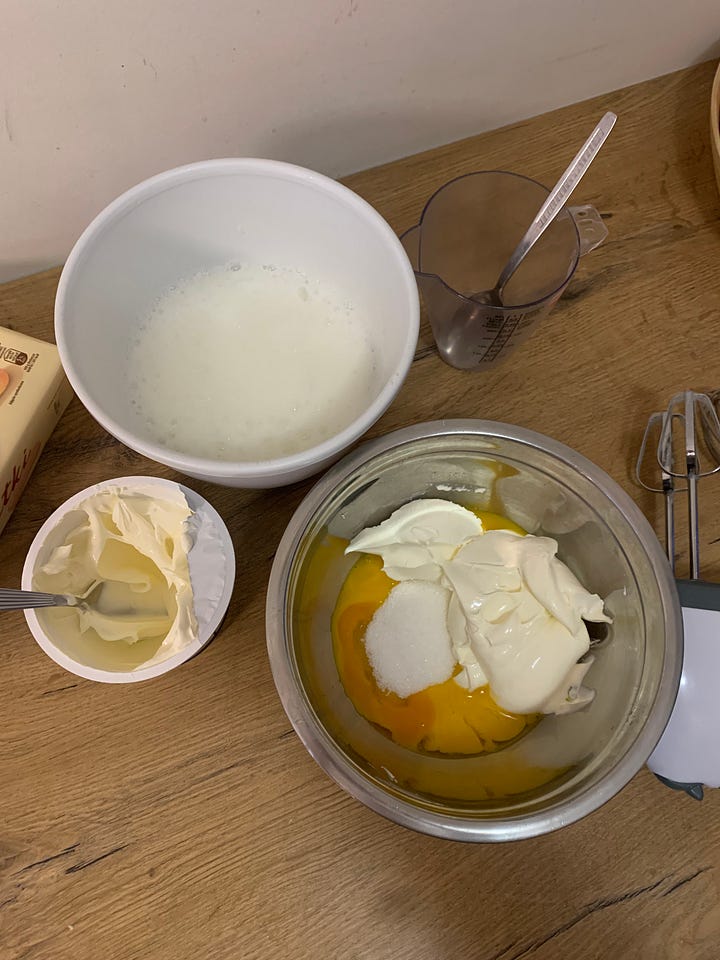
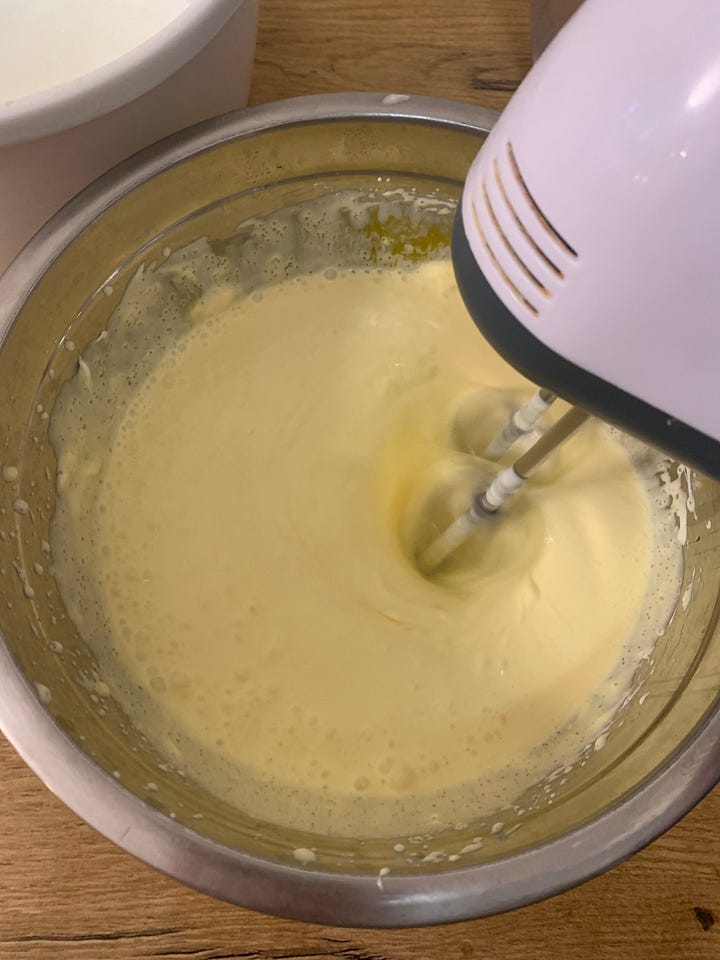

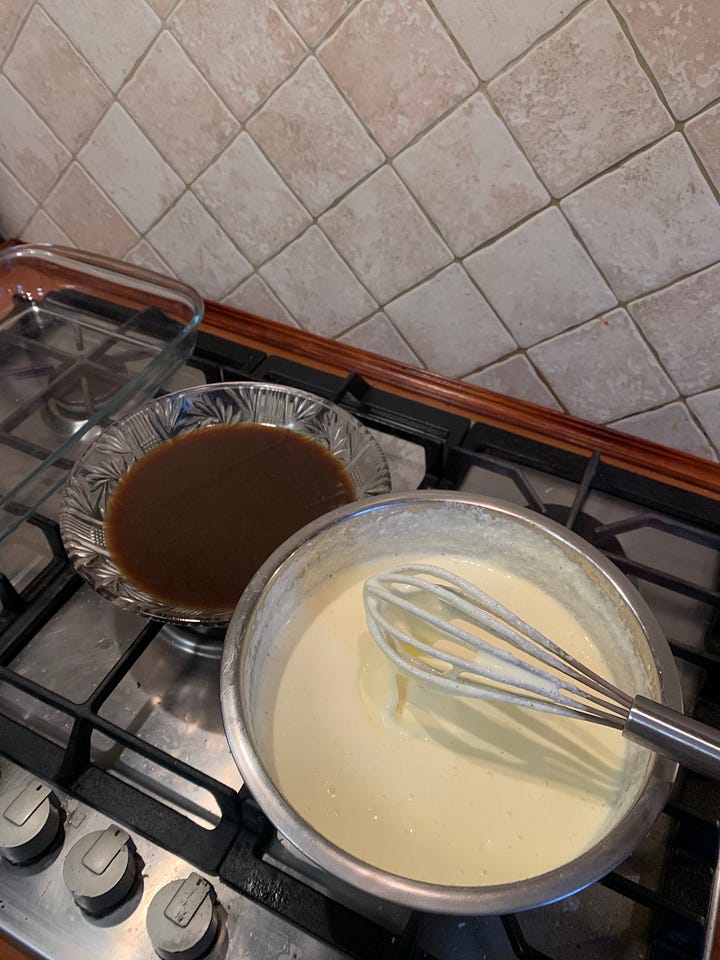
In an oven dish, layer the ladyfingers, soaking them one by one in the coffee and amaretto. The soak should be quick, as otherwise, they will become too soggy. Dip each ladyfinger, hold it for 3 seconds while turning it around, and then transfer it to the dish, one by one. My tiramisu turned out too dense and biscuity, which probably means I should have soaked the ladyfingers for longer.
Spread a layer of the mascarpone mixture over the soaked ladyfingers.
Repeat steps 6 and 7 if you want a second layer.
Dust with cocoa powder using a fine sieve.
Let rest in the fridge for at least 8 hours (overnight is best).
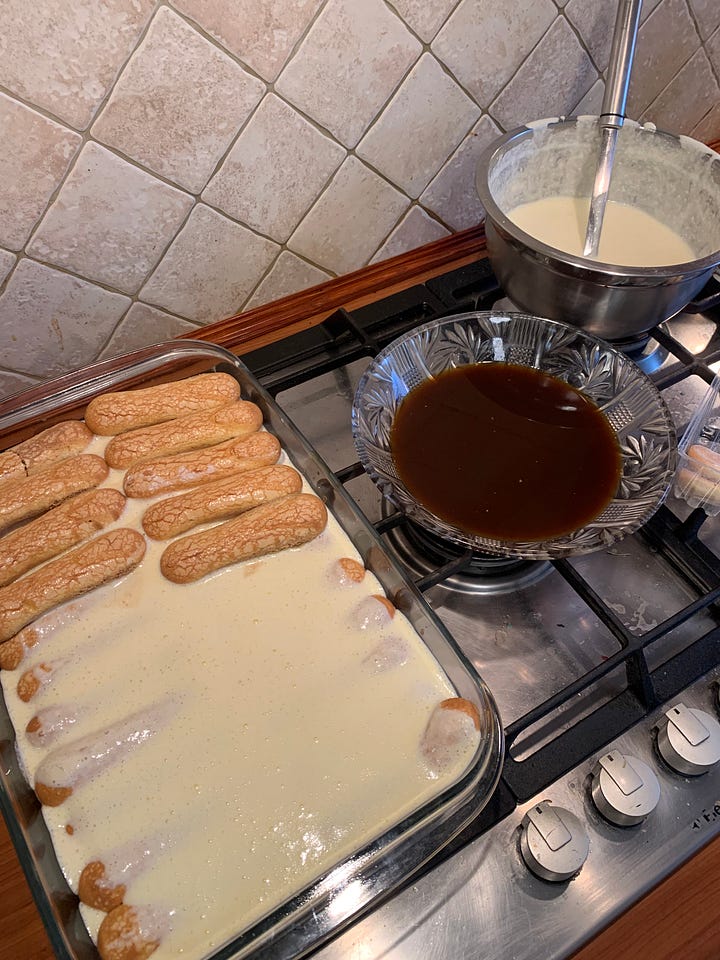

Enjoy!


